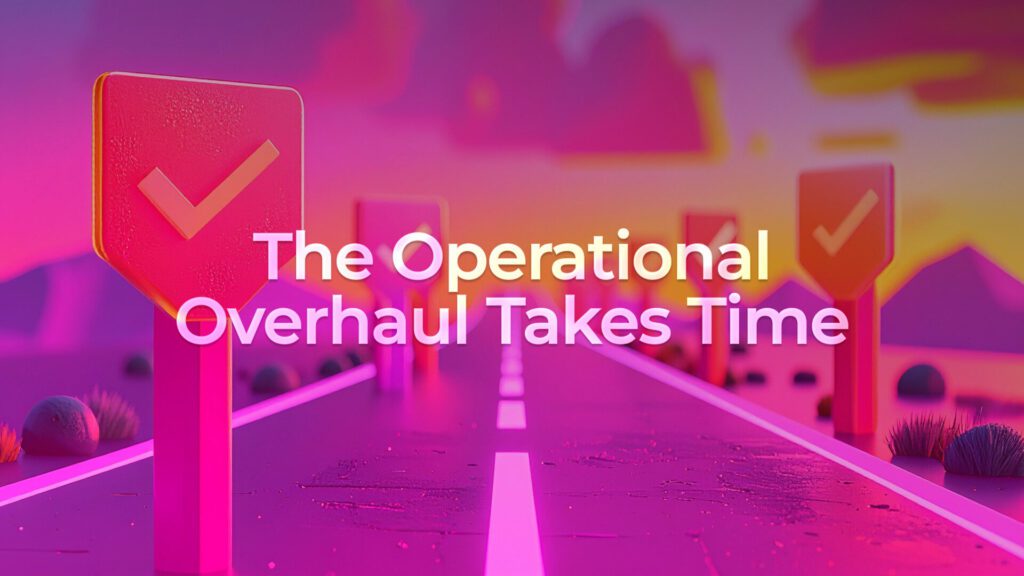
Every year, the business cycle repeats. An ambitious, market-disrupting go-to-market (GTM) strategy is born from C-suite offsites, brimming with innovation and ambitious revenue projections. Yet, by Q3 of the following year, the strategy is limping, having only achieved a fraction of its goal.
The hard truth? The biggest GTM strategies fail not because of a bad idea, but because of poor planning and execution.
The gap between an initial strategy document and operational reality is a chasm. It’s the difference between declaring a new Ideal Customer Profile (ICP) and ensuring that your Sales Development team is actually scoring leads against it, that your Marketing Automation platform is personalizing content based on it, and that your Product team is prioritizing features aligned with it.
This is the act of operationalizing GTM. It’s a mission that requires a fundamental, technical, and cultural overhaul that simply cannot be crammed into Q4 planning or Q1 rollout.

Operationalizing a successful GTM means aligning sales, marketing, and product. This isn’t about agreeing on a mission statement; it’s about agreeing on a database, a process, and a set of shared goals.
The evidence for this urgency is overwhelming and costly.
Misalignment between business teams costs companies 10% or more in annual revenue. (Source)
Let that number sink in. This means if your company generates $10 million in annual revenue, you are potentially leaving $1 million on the table every year because your teams are operating on different wavelengths. This misalignment manifests in dozens of ways:
- Sales may complain about poor-quality leads.
- Marketing may claim that Sales isn’t following up on qualified opportunities.
- Product may be left out of the feedback loop until it’s too late to impact the GTM.

Being thoughtful about a successful launch takes time to get everyone on the same page and running at the same speed. From the outset, all teams involved need to know what the checkpoints are on the way to the finish line.
A true operational GTM strategy involves:
- MarTech Stack Integration: Establishing a “Single Source of Truth” for customer data.
- Process Re-engineering: Creating universally agreed-upon definitions for everything from a Marketing Qualified Lead (MQL) to a Closed-Won deal.
- Cultural Change: Breaking down the functional silos that foster “us vs. them” mentalities between departments.
If you wait until too late in the year to begin this technical and cultural preparation, you are setting your 2026 strategy behind before it even starts. The only way to close that debilitating 10% revenue gap is to stop treating GTM operations as a Q4/Q1 exercise and start treating it as a foundational, year-long build.
In the next part of this series, we’ll dive into the specific technological roadblock — MarTech Debt — that may be suffocating your ability to execute a modern GTM strategy, and why the time to clean it up is now.
If you’re ready to get started with your 2026 GTM strategy before losing any more time, get in touch with info@tpalmeragency.com to find out how we can help you today.





